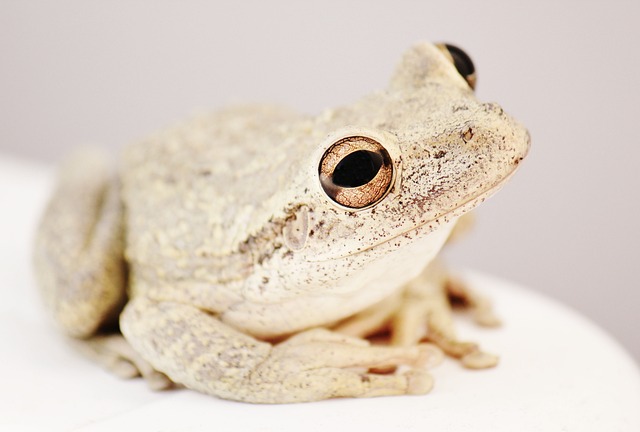Modern medicine offers Pain-free wart removal options that revolutionize traditional, invasive treatments. By targeting HPV and utilizing non-invasive techniques like topical medications, lasers, and cryotherapy, healthcare professionals can swiftly eliminate warts with minimal discomfort. This shift responds to the demand for convenient, effective solutions, aiming to improve accessibility in primary care settings through future advancements like targeted cryotherapy and advanced topical agents.
“Discover a revolutionary approach to bidding farewell to warts without the usual pain and discomfort. This article explores non-invasive Pain-free wart removal methods, offering a fresh perspective on treating these common skin issues. From understanding the causes of warts to delving into traditional removal techniques, we set the stage for the emergence of modern, gentle treatments. We dissect how these innovative procedures work, their numerous advantages, and potential future developments, empowering you with knowledge about pain-free wart removal.”
- Understanding Warts and Their Causes
- Traditional Wart Removal Methods: An Overview
- The Rise of Non-Invasive Pain-Free Treatments
- How Does Pain-Free Wart Removal Work?
- Benefits, Considerations, and Future Prospects
Understanding Warts and Their Causes
Warts are small, rough growths that typically appear on the skin and can be caused by various types of viruses, with the most common being the human papillomavirus (HPV). They are usually harmless but can cause discomfort and embarrassment due to their unsightly appearance. Pain-free wart removal methods have gained popularity as an attractive alternative to traditional treatments that often come with side effects or prolonged healing times.
Understanding the causes of warts is essential when considering non-invasive pain-free removal options. HPV infects skin cells, causing them to grow abnormally and form warts. Different strains of HPV can lead to various types of warts, including common warts, plantar warts, and genital warts. While they can disappear on their own, many people seek treatment for faster relief and to prevent the spread of the virus. Modern pain-free wart removal techniques offer a convenient and effective solution without the need for invasive procedures or harsh chemicals.
Traditional Wart Removal Methods: An Overview
Traditional methods for wart removal often involve invasive procedures that can be painful and uncomfortable. These methods typically include freezing warts with liquid nitrogen, slicing them off with a sharp knife or scalpel, or burning them away with caustic chemicals. While these techniques may be effective, they come with a range of potential side effects, from scarring and bleeding to prolonged healing periods.
The quest for pain-free wart removal has led to the development of less invasive alternatives. Modern approaches focus on eliminating warts without causing significant discomfort, using targeted treatments that minimize tissue damage. These include topically applied medications, laser therapy, and immunotherapy, all aiming to boost the body’s natural immune response to warts without resorting to harsher measures.
The Rise of Non-Invasive Pain-Free Treatments
The shift towards non-invasive pain-free treatments for various conditions, including warts, has been a game-changer in modern medicine. This approach is particularly appealing as it offers an alternative to traditional methods that often come with discomfort and potential side effects. With advancements in technology, healthcare professionals now have options that can effectively remove warts without causing significant pain or leaving unsightly scars.
Non-invasive treatments have gained popularity due to their ease and convenience. These methods typically involve targeted applications of topical creams, lasers, or freezing agents (cryotherapy) to destroy the wart while minimizing patient discomfort. Such innovations ensure folks no longer need to endure painful procedures or worry about long recovery times. As a result, pain-free wart removal has become a sought-after solution for those seeking swift relief from unsightly and sometimes uncomfortable growths.
How Does Pain-Free Wart Removal Work?
Pain-free wart removal is made possible through advanced non-invasive techniques that target and eliminate warts without causing significant discomfort. These methods often involve specialized treatments that work by weakening or destroying the wart’s underlying structure, allowing for its easy removal. One common approach uses a combination of topical medications and frozen therapy, where a cooling agent is applied to numb the area and shrink the wart before it’s gently removed.
Another popular pain-free method involves laser treatment, which precisely targets the wart while minimizing damage to surrounding healthy skin. This procedure is quick and effective, often leaving patients with little to no discomfort afterward. These modern techniques offer a significant improvement over traditional methods known for their potential to cause pain and scarring, making pain-free wart removal an attractive option for those seeking swift relief without the usual discomfort associated with warts.
Benefits, Considerations, and Future Prospects
Wart removal techniques that offer pain-free experiences with minimal discomfort have been gaining popularity, providing a welcomed alternative to traditional methods. This approach benefits patients by reducing anxiety and stress associated with painful procedures. It is especially advantageous for sensitive areas or individuals who may struggle with enduring discomfort.
Considerations for future developments in this field include improving the efficiency of pain-free treatments while ensuring their long-term effectiveness. As technology advances, researchers explore innovative solutions like targeted cryotherapy and advanced topical agents, aiming to enhance patient comfort without compromising results. The potential for minimal-contact or non-invasive techniques to become more widely accessible could significantly impact primary care settings, empowering healthcare providers to offer prompt relief to patients seeking wart removal.
Pain-free wart removal is a promising development in dermatology, offering effective solutions without the discomfort associated with traditional methods. As technology advances, non-invasive treatments are becoming increasingly popular, providing patients with a more comfortable and convenient option. With minimal side effects and quick recovery times, these innovative procedures have the potential to revolutionize wart management. Future research should focus on expanding accessibility and improving success rates, ensuring that folks can bid farewell to unsightly warts without the usual pain and hassle.
